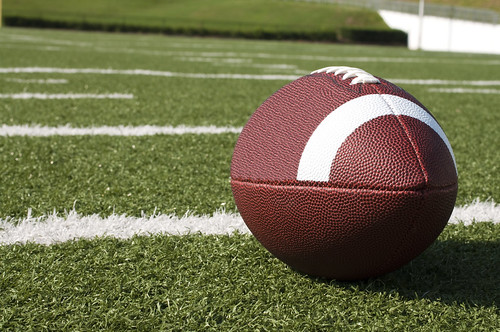
Grass is a big deal in football – a really big deal. Nearly every day of the week, untold millions of people watch players step out onto lush, green fields painted with white.
All aspects of the game are tough. Even growing and maintaining a real turf grass field has its challenges, like freezing temperatures, rain, and damage from tackles and foot traffic. So what type of grass can hold up to all that? Horticultural specialists and plant breeders throughout the land-grant university cooperative extension system, as well as USDA researchers from Agricultural Research Service, are working to answer that question. USDA’s National Institute of Food and Agriculture supports their research with Hatch Act funding.
At the game’s highest level, 17 of 32 National Football League (NFL) teams play on real grass instead of synthetic materials. Those teams employ a turf or field manager to grow, improve, and maintain their turf grass.
The field “is not for looking at,” said Ross Kurcab, Denver Broncos turf manager. “The question is, how’s it gonna play?” Kurcab, a graduate of the Colorado State University Landscape Horticulture Program, explained that the priorities for a turf manager are not just make the field look good; to the contrary, the first two priorities are safety and playability.
The NFL has tight standards for a field’s ability to absorb shock and tests the fields before every game. Anything too hard or soft is dangerous for players and can increase the frequency and seriousness of injury.
Not your average lawn grass, sports turf grass needs to be strong, dense, and able to withstand changes in temperature. Horticultural scientists test these characteristics at land-grant universities across the country. Kentucky bluegrass, Bermuda grass, and tall fescue are grass species best suited for sports turf.
The varieties that land-grant university extension systems develop are sometimes patented. For example, the Kansas City Chiefs, Washington Redskins, and Cleveland Browns use a Bermuda grass hybrid called “Latitude 36,” developed and patented by the Oklahoma State University (OSU) Extension Service. Latitude 36 is known to have excellent traffic tolerance and recuperation rate, improved cold hardiness, and excellent color, texture, density, and uniformity.
National recognition and adoption by the NFL and other athletic organizations is an indication that the researchers did their jobs well, said Dennis Martin, OSU Cooperative Extension turfgrass specialist. “It’s very important that the intended audience is confident enough to install and use Latitude 36. That means that not only did we do our job and assess the market correctly, but also that the market is accepting the product,” Martin said.
Another patented variety, “Tifway 419,” developed at the University of Georgia’s Coastal Plain Agricultural Experiment Center, grows on the fields of the Jacksonville Jaguars, the Tampa Bay Buccaneers and the Arizona Cardinals.
Land-grant universities also take credit for educating many of the NFL’s turf managers, including those of the Green Bay Packers, Philadelphia Eagles, Chiefs, Carolina Panthers, Browns, San Francisco 49ers, Denver Broncos, Oakland Raiders and Pittsburgh Steelers.
NIFA invests in and advances agricultural research, education and extension and seeks to make transformative discoveries that solve societal challenges.
